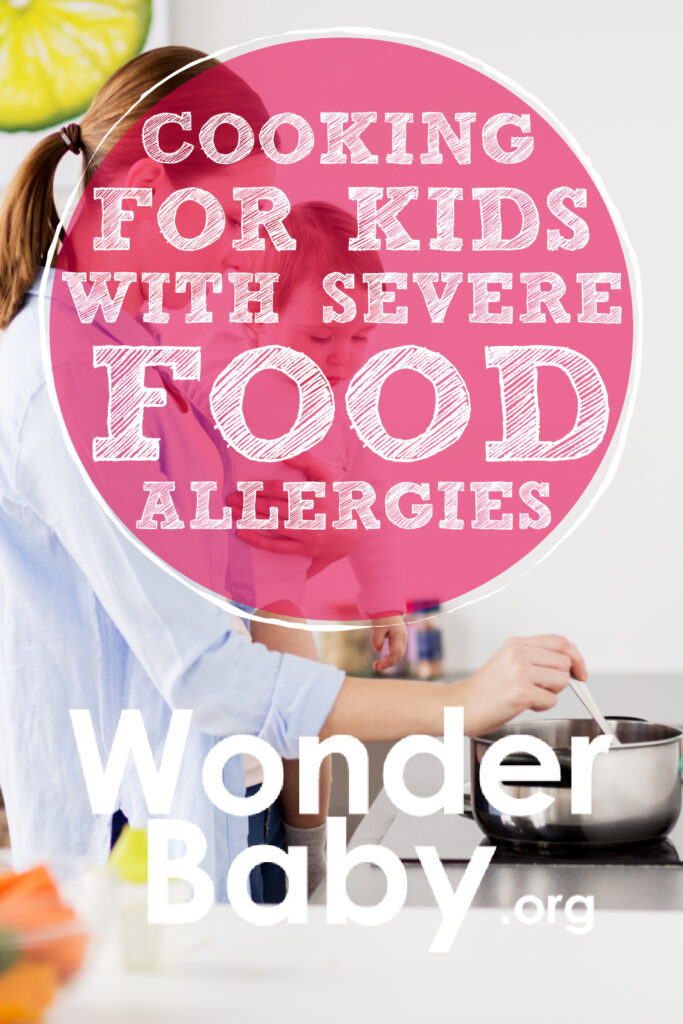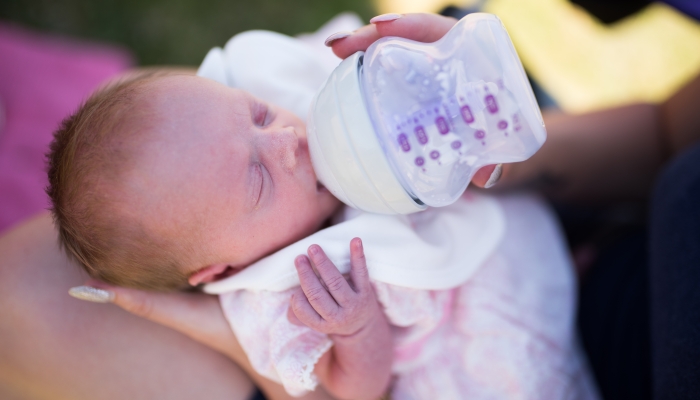Cooking for Kids With Severe Food Allergies

This post may contain affiliate links; please see our terms of use for details.
- Even a tiny amount of an allergen can cause a life-threatening reaction.
- Recipes can be adapted to accommodate a variety of food allergies.
- Allergy-friendly recipes and meal ideas can be tasty and nutritious.
“What’s for dinner?” In my house, that phrase is uttered about every hour during the afternoon until the food is served. Even with a healthy snack, my kids are ready to eat when mealtime rolls around.
I had a steep learning curve at the beginning of my journey of finding and recreating allergy-friendly recipes. My goal was to serve nutritious dishes and snacks that looked visually appealing while accommodating a specialty diet. I felt a little overwhelmed and wasn’t sure where to begin. How could I safely cook foods that my child with a severe food allergy would want to eat?
If you’re looking to make delicious, safe foods that bring joy back to meal times, read on! We’ve got you covered for breakfast, lunch, dinner, snacks, and everything in between.
Understanding Severe Food Allergies in Children

A food allergy is more complex than simply a case of the sniffles. A reaction can occur through contact11. Tan, B. M., Sher, M. R., Good, R. A., & Bahna, S. L.. Severe food allergies by skin contact. Annals of Allergy, Asthma & Immunology. 2001;86(5), 583–586. https://doi.org/10.1016/s1081-1206(10)62908-0, ingestion22. Abrams, E. M., & Sicherer, S. H.. Diagnosis and management of food allergy. Canadian Medical Association Journal. 2016;188(15), 1087–1093. https://doi.org/10.1503/cmaj.160124, or inhalation33. Ramirez, D. A., & Bahna, S. L.. Food hypersensitivity by inhalation. Clinical and Molecular Allergy. 2009;7(1). https://doi.org/10.1186/1476-7961-7-4.
According to allergy experts, any food or substance44. Żukiewicz-Sobczak, W. A., Wróblewska, P., Adamczuk, P., & Kopczyński, P.. Causes, symptoms and prevention of food allergy. Advances in Dermatology and Allergology. 2013;2, 113–116. https://doi.org/10.5114/pdia.2013.34162 has the potential to cause an allergic reaction in a susceptible individual.
Overview of Common Food Allergies
Currently, nine different categories of foods are recognized by the Food and Drug Administration (FDA) as top allergens. These include milk (dairy), wheat (gluten), soy, eggs, peanuts, tree nuts, fish, shellfish, and sesame.
Current laws and regulations55. FDA. Food Allergies. U.S. Food and Drug Administration. 2023. https://www.fda.gov/food/food-labeling-nutrition/food-allergies from the FDA require that a package be clearly marked if a product contains one of these allergens, is produced on shared equipment with other allergens, or in the same facility where other products where these allergens are made.
When your child has a food allergy, it is extremely important to learn the skill of decoding a food label and to teach your child how to do the same: Many near-misses have been caught, even with a formerly safe product, by reading the label of every item you plan to use.
Recognizing Allergy Symptoms
An individual’s physical response to their allergen depends on several factors. The method of exposure and level of previous allergic response may give some idea of the symptoms of an allergic reaction.
Mild allergic reactions tend to include:
- Mouth itching
- Itchy rash or hives
- Vomiting
- Diarrhea
- Stomach pain
More severe reactions are known as anaphylaxis66. Anaphylaxis. American Academy of Allergy Asthma & Immunology. https://www.aaaai.org/conditions-treatments/allergies/anaphylaxis and can include:
- Wheezing or coughing
- Trouble breathing
- Hoarse voice
- Swelling of lips or tongue
- Dizziness or low blood pressure
- Loss of consciousness
- Cardiac arrest
The American Academy of Pediatrics77. Allergy and Anaphylaxis Emergency Plan. American Academy of Pediatrics. 2019. https://downloads.aap.org/HC/AAP_Allergy_and_Anaphylaxis_Emergency_Plan.pdf reminds us that prompt and appropriate treatment is vital to successfully managing a food allergy emergency.
3 Steps for an Allergy-Friendly Kitchen

In many houses, the kitchen is the main hub of activity, where members of the family tend to gather and share their day as food is being prepared and consumed.
It can be daunting to reorganize your kitchen if you’re new to food allergies and preparing foods in your own space. As you work to create a safe zone for preparing allergy-friendly meals, consider these three tips:
1. Ensure a Clean and Uncontaminated Space
When it comes to creating an allergy-friendly cooking space, I believe that the kitchen should first be a safe space for the person with the most severe allergy.
In other words, if a food contains common allergens that a member of the family is allergic to, it doesn’t come into the kitchen. Period.
I’m also a stickler for washing hands often88. Bloomfield, S. F., Stanwell-Smith, R., Crevel, R. W., & Pickup, J.. Too clean, or not too clean: The Hygiene Hypothesis and home hygiene. Clinical & Experimental Allergy. 2006;36(4), 402–425. https://doi.org/10.1111/j.1365-2222.2006.02463.x, particularly if a member of the family has been elsewhere eating foods that cause allergic reaction symptoms to others once home. This person then dries their hands with paper towels instead of the usual hand towel to reduce the possibility of transferring any remaining traces of allergens to a communal item.
2. Separate Cooking Utensils
Some families color-code their kitchen products and designate specific pots, pans, and utensils that are only used when preparing food for their loved one with a food allergy.
I find it’s easier to make the whole kitchen safe and eliminate the possibility of cross-contamination by not allowing offending products into the house. Meal preparation tends to be busy as it is, and I’m often distracted by my kids swirling around me in the kitchen. Better to be safe than risk an accidental exposure.
3. Choose Allergen-Free Alternatives
If cooking with food allergies in mind is a new skill you’re learning, it can be invaluable to talk to others who have the same dietary restrictions and learn from their experience.
In my early days of learning to accommodate first my own (and later, my child’s) food allergies, I had a few folks on speed dial who could advise me about specific recommendations for substitutions or food products.
Consider the following tips when making your next recipes allergy-friendly:
| Instead of using: | Try: |
| Milk (dairy) | Dairy-free versions of products like cheese and butter, non-dairy milks like coconut milk, nut milks, rice milk, or soy milk. |
| Wheat (gluten) | Gluten-free all-purpose flour, almond flour, cornstarch, or tapioca flour for thickening. |
| Soy | Canola or vegetable oil for cooking, coconut aminos instead of soy sauce. |
| Eggs | Unsweetened applesauce, chia, ripe banana, or ground flax. |
| Peanuts | Roasted navy beans or chickpeas as a topping for dishes, coconut or vegetable oil for frying. Wowbutter (made from roasted soy) can be used in place of peanut butter and works well in baked goods. |
| Tree nuts | Unsalted pumpkin, sunflower, squash, or poppy seeds (cross-contamination with tree nuts is common in seed products; check food labels carefully.) Sunflower seed butter is an excellent substitute for nut butters. |
| Fish | Tofu or mushrooms for texture substitutes, soy sauce or coconut aminos for fish sauce, coconut or vegetable oil for fish oil. |
| Shellfish | Beef, pork, ham, turkey, beans, or legumes for texture; soy sauce or vegetable broth in sauces. |
| Sesame | Chia or ground/whole pumpkin seeds can be used instead of sesame seeds. Poppy seeds are also an excellent substitute. |
Once you have an idea of where to start swapping out certain ingredients for safer alternatives, adapting favorite menu items and baked goods becomes much more manageable.
Preparing Allergy-Friendly Meals

Sometimes all it takes is a few new ideas to spark your creativity when learning to cook with food allergies.
Consider the following suggestions for simple, delicious, kid-approved dishes:
Bountiful Breakfasts
Start the day off right with a tasty combination of vital nutrients by serving:
- Rice or almond flour pancakes or waffles. These can be topped with maple or agave syrup, apple butter, or fresh fruit.
- Our favorite maple cinnamon granola. I accommodate my family’s allergies by using gluten-free oats and substituting hemp hearts and ground flaxseed for the almonds.
- My grandmother’s pumpkin bread. This dreamy, dairy-free baked good is delicious on its own and easily accommodates a wheat or egg allergy.
Power Lunches
Refuel mid-day with meal ideas to keep your child going strong like these:
- Pack a protein punch with ham and pepperoni kabobs, served with tomato-based dipping sauce.
- Gluten-free bread with peanut butter, nut butter, Wowbutter, and honey. Pro tip: Break out your child’s favorite seasonal cookie cutters to increase visual appeal.
- Black bean and cheese quesadillas on corn or flour tortillas.
Snack Suggestions
Need a quick bite for your kids or their friends to help them last to the next meal? You could serve:
- Peanut butter sprinkle cookie bites (don’t let the name fool you; they’re healthy!)
- Dairy-free orange strawberry coconut popsicles
- Hummus and cut-up vegetables or fresh berries with coconut whipped cream. Bonus—It’s vegan!
Nourishing Dinners
End the day with a solid combination of protein and nutrients to last until morning. For example, try:
- Rice and corn pasta come in a variety of shapes beyond spaghetti noodles. Try your hand at gluten-free lasagna or stuffed shells with sauce.
- Black bean and pumpkin chili served alongside baked potatoes. This chili is an ideal way to sneak in extra veggies by pureeing them and adding them to the pumpkin.
- A taco bar is always a fun idea. Chicken or ground beef can be used, with gluten-free, homemade taco seasoning if desired for extra flavor. Substitute dairy-free cheese for toppings, or leave it out altogether.
Delicious Desserts
Want to end the day on a sweet note? Consider:
- Fruit sorbets or coconut milk ice cream
- All kinds of cookies. Make these allergy-friendly recipes with dairy-free butter, almond or other non-wheat flour, chocolate chips that are vegan and allergen-free, or ground flaxseed instead of egg.
- Flourless chocolate cake
Once you learn how to adapt your favorite recipes to safely suit your child’s allergies, there’s no limit to the flavor combinations you can create!
- One 9 oz bag of Enjoy Life Dark Chocolate Morsels
- Vegan chocolate chips made in a dedicated nut-free and gluten-free facility, perfect for making school safe snacks
- Larger, indulgent dark chocolate chips are perfect for melting, treating yourself, or as baking chocolate in your favorite recipes for desserts, quick snacks or breakfast
- Dairy free chocolate chips that are free from 14 common allergens, including wheat, peanuts, tree nuts, dairy, casein, soy, and egg
FAQs
What are some best practices for managing cross-contamination in kitchens dealing with severe food allergies?
If you must share your kitchen with your child’s allergens, it’s very important to be mindful of what you use and touch during the cooking process.
At a minimum, use dedicated utensils or cutting boards when preparing food that has contact with these substances, and wash them in hot, soapy water immediately after use.
For more information, check out these tips99. Avoiding Cross-Contact In Your Kitchen. Kids With Food Allergies. 2014. https://kidswithfoodallergies.org/living-with-food-allergies/choosing-safe-foods/prevent-allergic-reactions-in-your-kitchen from the staff at Kids with Food Allergies on how to avoid cross-contamination in the kitchen.
What are some trustworthy brands offering allergen-free food products for children with severe allergies?
Depending on the product you wish to substitute, there are a range of options available.
Some reliable brands offering allergen-free foods include:
- Kinnikinnick: Free from gluten, dairy, peanuts, tree nuts, and soy (most products are also free from eggs)
- Enjoy Life: Free from gluten, dairy, peanuts, tree nuts, soy, egg, fish, shellfish, sesame, mustard, sulfites, and lupin.
- Namaste: Free from gluten, dairy, peanuts, tree nuts, soy, egg, fish, shellfish, sesame, mustard, sulfites, lupin, and celery.
- SO Delicious Dairy-Free: Offers ice cream, milk alternatives, whipped topping, yogurt, etc.
- Wowbutter: Free from gluten, dairy, peanuts, tree nuts, and eggs.
- Sunbutter: Free from gluten, dairy, peanuts, tree nuts, soy, egg, fish, and shellfish.
References
- Tan, B. M., Sher, M. R., Good, R. A., & Bahna, S. L. (2001). Severe food allergies by skin contact. Annals of Allergy, Asthma & Immunology, 86(5), 583–586. https://doi.org/10.1016/s1081-1206(10)62908-0
- Abrams, E. M., & Sicherer, S. H. (2016). Diagnosis and management of food allergy. Canadian Medical Association Journal, 188(15), 1087–1093. https://doi.org/10.1503/cmaj.160124
- Ramirez, D. A., & Bahna, S. L. (2009). Food hypersensitivity by inhalation. Clinical and Molecular Allergy, 7(1). https://doi.org/10.1186/1476-7961-7-4
- Żukiewicz-Sobczak, W. A., Wróblewska, P., Adamczuk, P., & Kopczyński, P. (2013). Causes, symptoms and prevention of food allergy. Advances in Dermatology and Allergology, 2, 113–116. https://doi.org/10.5114/pdia.2013.34162
- FDA. (2023, January 1). Food Allergies. U.S. Food and Drug Administration. https://www.fda.gov/food/food-labeling-nutrition/food-allergies
- Anaphylaxis. American Academy of Allergy Asthma & Immunology. (n.d.). https://www.aaaai.org/conditions-treatments/allergies/anaphylaxis
- Allergy and Anaphylaxis Emergency Plan. American Academy of Pediatrics. (2019, March). https://downloads.aap.org/HC/AAP_Allergy_and_Anaphylaxis_Emergency_Plan.pdf
- Bloomfield, S. F., Stanwell-Smith, R., Crevel, R. W., & Pickup, J. (2006). Too clean, or not too clean: The Hygiene Hypothesis and home hygiene. Clinical & Experimental Allergy, 36(4), 402–425. https://doi.org/10.1111/j.1365-2222.2006.02463.x
- Avoiding Cross-Contact In Your Kitchen. Kids With Food Allergies. (2014, July). https://kidswithfoodallergies.org/living-with-food-allergies/choosing-safe-foods/prevent-allergic-reactions-in-your-kitchen

The information WonderBaby provides is not intended to be, and does not constitute, medical or other health advice or diagnosis and should not be used as such. Always consult with a qualified medical professional about your specific circumstances.
Related Posts

Feeding and Eating, Special Needs
Feeding Therapy Approaches for Infants with Special Needs
Many children with special needs have feeding difficulties. Working with a speech therapist, being patient, and experimenting with textures can help.

Feeding and Eating
Unexpected Foods That Cause Allergen Cross-Reactivity
A variety of unexpected foods and environmental substances can trigger an allergic reaction through cross-reactivity to food proteins.

Feeding and Eating
Easing Anxiety for Families Facing Food Allergies
Ongoing physical preparations and speaking openly about anxiety can ease the transition from diagnosis to living well with a food allergy.
